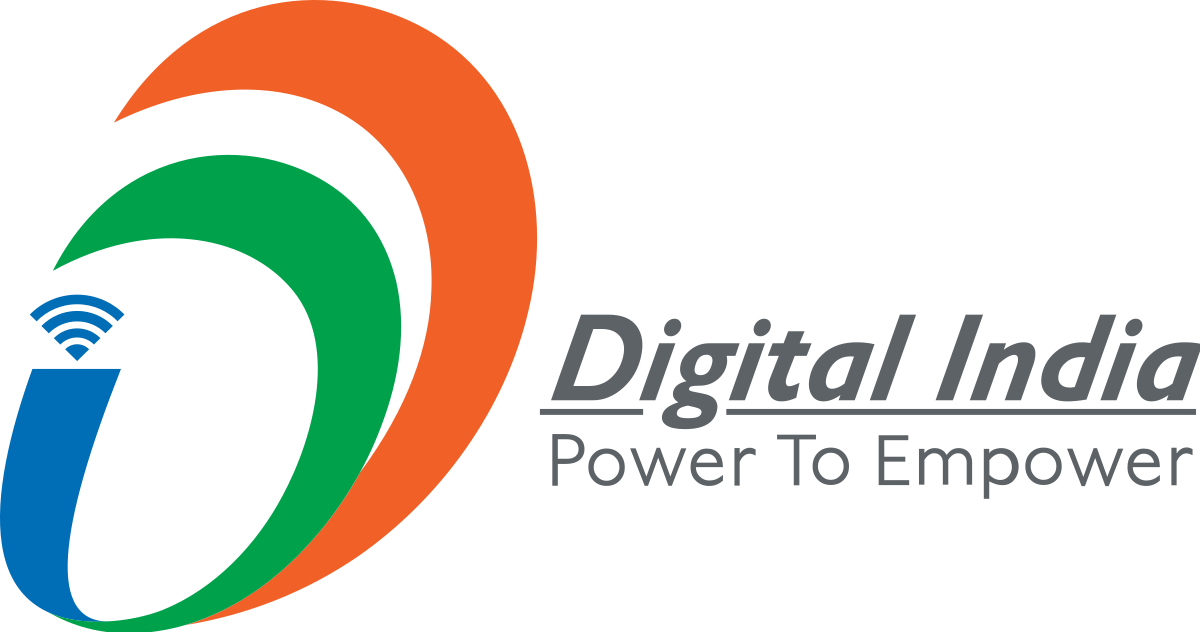Adolescent Health- Rashtriya Kishor Swasthya Karyakram
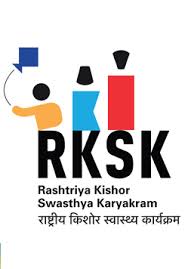
The strategies of RKSK/AH:
A: Community Based Interventions
- Peer Education (PE) Programme
- Quarterly Adolescent Health & Wellness Day (AHWD)
- Weekly Iron & Folic Acid Supplementation (WIFS)
- Menstrual Hygiene Schemes (MHS)
B: Facility Based Interventions
- Strengthening of Adolescent Friendly Health Clinics (AFHC)
C: School Health & Wellness Programme (SHWP)
- Selection & Capacity building of Health & Wellness Ambassadors (HWAs)
- School Health Promotion& Screening
- Provision of services & Electronic Health Records
D: Social and Behaviour Change Communication with focus on Inter Personal Communication
Adolescents (10-19 years) constitute about one-fifth of India’s population and young people (10-24 years) about one-third of the population. This represents a huge opportunity that can transform the social and economic fortunes of the country. The large and increasing relative share and absolute numbers of adolescent and youth population in India make it necessary that the nation ensures they become a vibrant, constructive force that can contribute to sustainable and inclusive growth. The skills, knowledge, attitudes and behaviour of today’s young people are essential to whether, and how well, the demographic dividend is successfully leveraged.
In order to enable adolescents, fulfil their potential, substantial investments must be made in education, health, development and other areas. Investments in adolescents will have an immediate, direct and positive impact on India’s health goals and on the achievement of the Millennium Development Goals (MDGs), especially goals 1, 2, 3, 4, 5 and 6; at the same time, it will enhance economic productivity, effective social functioning and overall population development. However, a considerable number of adolescents face challenges to their healthy development due to a variety of factors, including structural poverty, social discrimination, negative social norms, inadequate education, and early marriage and child-bearing, especially in the marginalised and under-served sections of the population. In order to respond effectively to the needs of adolescent health and development, it is imperative to situate adolescence in a life-span perspective within dynamic sociological, cultural and economic realities, the Ministry of Health and Family Welfare launched Rashtrya Kishor SwasthyaKaryakram (RKSK) on 7th January 2014 with the six thematic areas covered under adolescent health programming include:
- Improve nutrition
- Reduce the prevalence of malnutrition among adolescent girls and boys (including overweight/obesity)
- Reduce the prevalence of iron-deficiency anaemia (IDA) among adolescent girls and boys
- Enable sexual and reproductive health
- Improve knowledge, attitudes and behaviour, in relation to SRH y Reduce teenage pregnancies
- Improve birth preparedness, complication readiness and provide early parenting support for adolescent parents
- Enhance mental health
- Address mental health concerns of adolescents
- Prevent injuries and violence
- Promote favourable attitudes for preventing injuries and violence (including GBV) among adolescents
- Prevent substance misuse
- Increase adolescents’ awareness of the adverse effects and consequences of substance misuse
- Address conditions for NCDs
- Promote behaviour change in adolescents to prevent NCDs such as cancer, diabetes, cardio-vascular diseases and strokes.

What is adolescence?
Adolescence (10-19 years) is a phase of life which has recently gained recognition as a distinct phase of life with its own special needs. This phase is characterized by acceleration of physical growth and, psychological and behavioural changes thus bringing about transformation from childhood to adulthood.
Adolescence has been described as the transition period in life when an individual is no longer a child, but not yet an adult. It is a period in which an individual undergoes enormous physical and psychological changes.
Physical Events/Changes During Adolescence:
| BOYS | GIRLS | COMMON |
|
• Growth spurt occurs • Muscles develop • Skin becomes oily • Shoulders broaden • Voice cracks • Underarm and chest hair appears • Pubic hair appears • Facial hair appears • Penis and testes enlarge |
• Growth spurt occurs • Breasts develop • Skin becomes oily • Hips widen • Waistline narrows • Underarm hair appears • Pubic hair appears • External genitals enlarge • Uterus and ovaries enlarge |
|
WHY INVEST IN ADOLESCENT?
By investing in adolescent health today, we are investing the workforce, parents and leaders of tomorrow and of course improve our maternal and child health outcomes, breaking the inter-generational cycle of poor health.
“Adolescence is the key life stage for inculcating positive behaviour and attitudes”
OBJECTIVES OF RASHTRIYA KISHOR SWASTHYA KARYAKRAM (RKSK) PROGRAMME
- Improve nutrition
- Improve sexual and reproductive health (SRH
- Enhance mental health
- Prevent injuries and violence
- Prevent substance misuse
- Address NCDs
INTERVENTIONS TO REACH THE OBJECTIVES
A. Community Based Interventions& Approaches: The PE programme aims to ensure that adolescents or young people between the ages of 10-19 years benefit from regular and sustained peer education covering the program objectives. This is eventually expected to improve life skills, knowledge and aptitude of adolescents. The activities are:
A.1 Peer Education (PE)
- Selection of Peer Educators (PEs) by ASHAs from PE districts
- Training of PEs & ASHAs
- Sessions by PEs in schools/club/locality
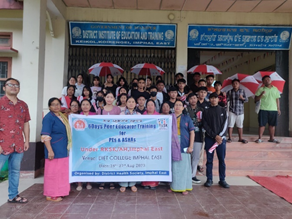
Imphal East District
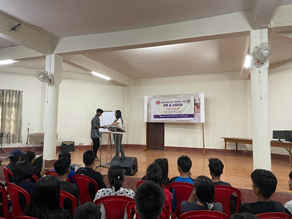
Churachandpur District
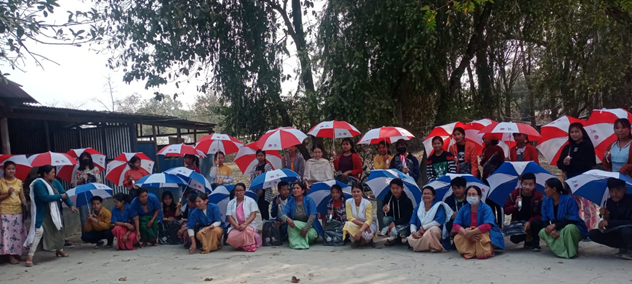
Peer Education Training for 6 days at PHC Khumbong, Imphal West District (Umbrella & Bag as non-monetary incentive)
A.2 Quarterly Adolescent Health & Wellness Day (AHWD)
- Conduct Quarterly Adolescent Health & Wellness Day
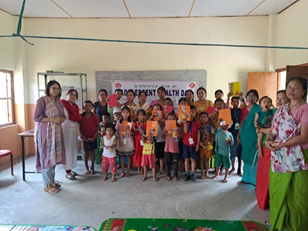
AHWD at Khurkhul Relief Camp – September, 2023

AHWD at Khurkhul Relief Camp – September, 2023
A.3 Weekly Iron Folic Acid Supplementary Programme (WIFS)
- Convergence programme with Social Welfare (ICDS) department
- Covering all govt. & govt. aided schools and Angan Wati Centres (AWCs)
- Distribution of IFA & Albendazole (NDD) in schools and Angan Wati Centres (AWCs)
A.4 Menstrual Hygiene Scheme (MHS)
- Covering 25% of rural adolescent girl (AGs)
- Selling of sanitary napkin at the lowest price @Rs. 5 by ASHAs (1 free sanitary napkin for ASHA/month)
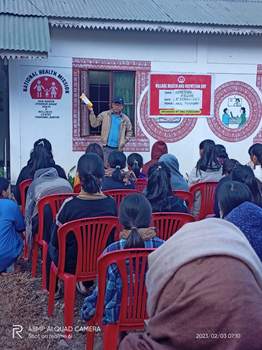
Senapati District

Imphal East District
B. Facility Based Interventions: Both the Peer Education (PE) Programme and the Adolescent Health and Wellness Day (AHWD) should lead to referrals to AHFCs which would seek to provide a combination of commodities, IEC and curative services at PHC, CHC and DH levels plus outreach and referral services. The activities are:
B.1 Strengthening of Adolescent Friendly Health Clinics (AFHC)
- Setting up of Adolescent Friendly Health Clinics (AFHCs) at PHCs/UPHCs, CHCs, SDHs & DHs to provide clinical & counseling services through the existing health system
- Setting up of Model, M-AFHC at District Hospital (DH) level
- Capacity Building on Adolescent Friendly Health Services (AFHS) for Medical Officers (MOs), ANMs/CHOs, Counsellors etc.
- Availability of commodities like Weekly Iron & Folic Acid Supplementation (IFAs) &Albendezole, Sanitary napkins, Contraceptives & other medicines, IEC & IPC materials
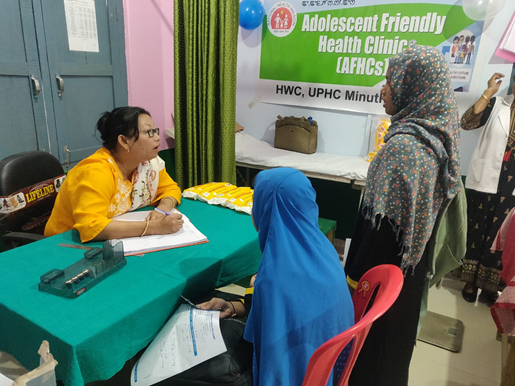
AFHC at UPHC Minuthong, Imphal East District
C. Convergence:
C.1 With Health & Family Welfare – FP (incl. VHND) RBSK, NACP, National
Tobacco Control Programme, National Mental Health Programme, NCDs and IEC.
C.2 With other departments/schemes – WCD (ICDS, KSY, BSY, SABLA) HRD
(AEP, MDM), Youth Affairs and Sports (Adolescent Empowerment Scheme,
National Service Scheme, NYKS, NPYAD).
D. Social and Behaviour Change Communication with focus on Inter Personal Communication:
- Information dissemination on nutrition, menstrual disorders, personal hygiene, menstrual hygiene, use of sanitary napkins, use of contraceptives, sexual concerns, depression, sexual abuse, gender violence, substance misuse and promoting healthy behaviour to prevent non communicable diseases y Posters/booklets/pamphlets, wall writing and visuals.
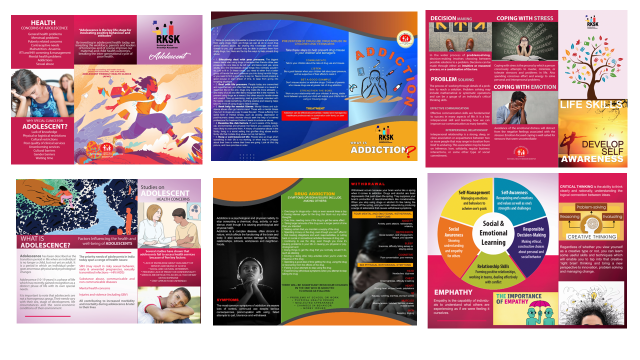
Brochures on Adolescent Health, Addiction, Life Skills etc.
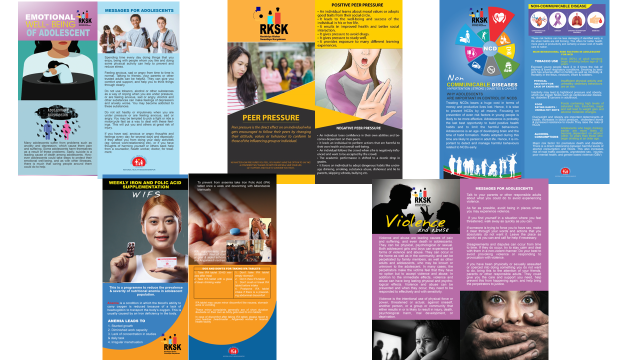
Leaflets on Emotional Well Being of Adolescents, Peer Pressure, NCDs, WIFS & Violence
E. School Health & Wellness (SHWP) Programme under Ayushman Bharat: The School Health Promotion Activities under Ayushman Bharat Programme a joint initiative of Ministry of Health and Family Welfare and Department of School Education & Literacy, Ministry of Human Resource & Development.The objectives are:
- To provide age-appropriate information about health and nutrition to the children in schools.
- To promote healthy behaviours among the children that they will inculcate for life.
- To detect and treat diseases early in children and adolescents including identification of malnourished and anaemic children with appropriate referrals to PHCs and hospitals.
- To promote use of safe drinking water in schools • To promote safe menstrual hygiene practices by girls.
- To promote yoga and meditation through Health & Wellness Ambassadors.
- To encourage research on health, wellness and nutrition for children.
The school health promotion activities will be implemented in all the government and government aided schools in the country. This will be achieved through the joint efforts and close coordination between Ministry of Health & Family Welfare and Department of School Education and Literacy, Ministry of Human Resource and Development at all levels (Centre and State). The activities are:
- Capacity Building of State Resource Group (SRGs), District & Block Resource Group
- Orientation of School Heads on SHWP
- Selection of Teachers as Health and Wellness Ambassadors (HWAs)
- Capacity Building of Health and Wellness Ambassadors (HWAs)
- Selection of School Health & Wellness Messengers (HWMs)
- School Health Promotion Activities
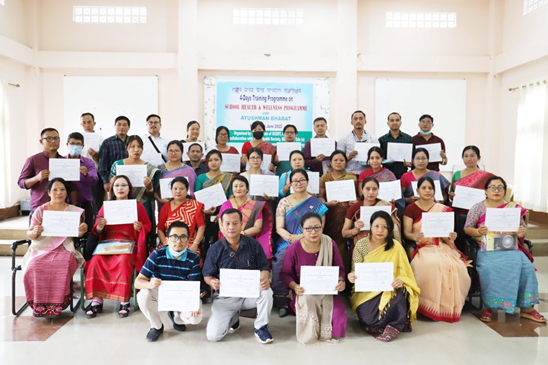
Capacity Building of School Teachers at SCERT, Imphal for Imphal West & Imphal East Districts
F. CHIEF MINISTER’S MENSTRUAL HYGIENE SCHEME (CMMHS), A STATE INITIATIVE
The Chief Minister’s Menstrual Hygiene Scheme (CMMHS) was to improve menstrual hygiene for school going adolescent girls (10-19 years) with the following objectives:
- Free delivery of high-quality sanitary napkins (SN) to school going adolescents’ girls.
- To cover both urban and rural school going adolescent girls in the state.
- To increase awareness among adolescents’ girls on menstrual hygiene, build self-esteem, & empower girls for greater socialisation.
- To ensure safe disposal of sanitary napkins in an environment friendly manner.
The scheme was initiated with the approval from the State cabinet on 21st April, 2022. The scheme is funded by the State Government of Manipur and is linked with School Fagat-hansi Mission. The scheme also encouraged local start up to initiate local manufacturing group for production of standard sanitary napkins in bulk. The scheme is providing the machines/equipments and others at free of cost. It is implementing in phase wise and the brief activities conducted during the first phase are highlighted below:
|
Sl. No. |
Indicators |
Total |
|
1 |
Number of Districts covered |
16 |
|
2 |
Number of Schools covered |
38 |
|
3 |
Number of sanitary vending machines procured and installed |
33 |
|
4 |
Number of incinerators machines procured and installed |
33 |
|
5 |
Number of sanitary napkins allocated/distributed |
323200 |
|
6 |
Number of beneficiaries availing the service within 6 months (April to September, 2023) |
9395 |
|
7 |
Number of participants participated at State level sensitization program |
48 |
|
8 |
Number of participants participated in 2 hands on training programs |
81 |
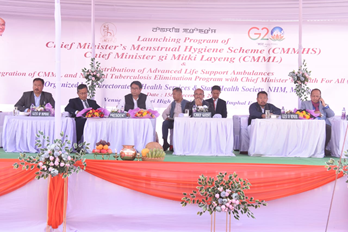
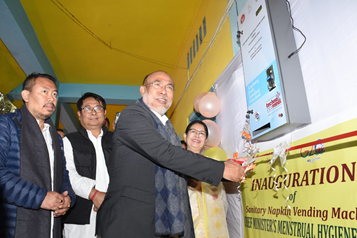
Launching program of Chief Minister’s Menstrual Hygiene Scheme (CMMHS) at Wangkhei High School on 15th December, 2023











